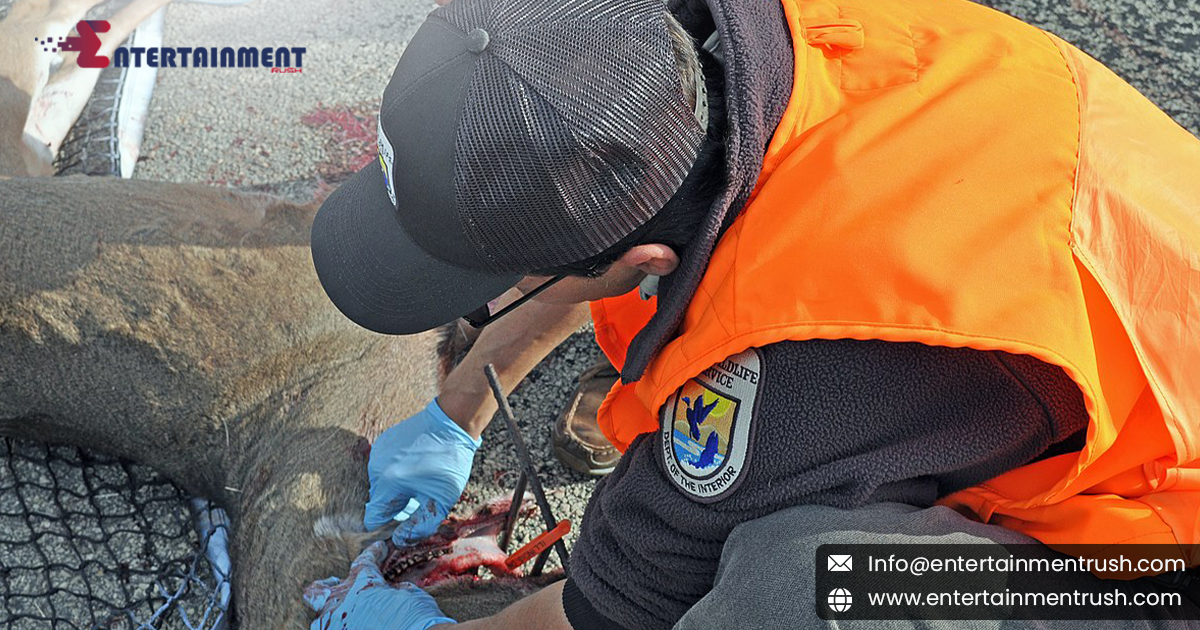Chronic Wasting Disease (CWD), a lethal and untreatable ailment reminiscent of the infamous mad cow disease, has silently crept among deer species across North America, now beginning to encroach upon global territories. This insidious disease was first identified within a lone herd of captive mule deer in Colorado back in 1967. Since then, CWD has infiltrated both captive and wild populations of mule deer, white-tailed deer, elk, moose, and even reindeer. Its reach has expanded dramatically, with reports surfacing in 32 states and crossing international borders into countries like Canada, South Korea, and Norway.
The Rogue Protein: Prions and Their Impact
The culprit behind CWD is a misbehaving protein known as a prion, unlike conventional pathogens such as bacteria or viruses. To illustrate, consider the fictional substance “ice-nine” from Kurt Vonnegut’s “Cat’s Cradle,” which solidifies water upon contact, propagating its crystalline structure indefinitely. Similarly, when an animal ingests the prion, it coerces normal proteins to adopt its misfolded shape. This metamorphosis spells dire consequences, particularly within the central nervous system, where accumulating prions form plaques leading to cell death. The resulting progressive degeneration manifests in abnormal behaviors in the afflicted animal, culminating in its demise.
Modes of Transmission: A Silent Menace
Compounding the challenge, infected animals shed prions through bodily fluids such as saliva, urine, or feces, thereby contaminating the environment. Astonishingly resilient, these prions can persist on plants or in soil for extended periods until unsuspecting animals unwittingly consume them. This mode of transmission poses a formidable challenge akin to a wildfire gaining momentum if left unchecked.
Containment Strategies: Exploring Novel Approaches
Traditional containment methods, such as culling infected animals, have shown efficacy primarily in the early stages of an outbreak, akin to wildfire management requiring swift intervention. Noteworthy successes, such as New York State’s extensive culling efforts in 2005 following the discovery of CWD-positive deer, underscore the importance of proactive measures.
Selective Breeding: A Promising Frontier
Researcher Nicholas Haley, a veterinary microbiologist at Midwestern University in Arizona, has delved into novel strategies for mitigating CWD. His focus centers on breeding CWD-resistant animals, identifying genetic variants that confer heightened resilience. Through genetic testing, researchers have pinpointed alleles of the prion protein that render deer less susceptible to infection. These “good” alleles act as unique locks, impeding the misfolded prion’s ability to wreak havoc within the host.
Vaccine Development: A Beacon of Hope
The pursuit of a CWD vaccine offers another avenue of hope akin to monumental strides made against viral pathogens. However, developing a vaccine against prions presents formidable challenges, notably distinguishing between harmful and healthy protein variants. Preliminary vaccine trials in elk have unveiled complexities, with vaccinated animals paradoxically exhibiting accelerated disease progression.
Overcoming Challenges: Logistics and Delivery
Moreover, administering a vaccine to wild populations poses logistical hurdles, necessitating innovative delivery mechanisms akin to aerial baiting techniques used in rabies vaccination campaigns. While these approaches hold promise, surmounting the myriad obstacles demands sustained collaboration, ingenuity, and a deep understanding of the intricate interactions between pathogens, hosts, and ecosystems.
The Imperative of Action: Preserving Wildlife and Ecosystems
In the dynamic battle against Chronic Wasting Disease, scientists, wildlife managers, and policymakers are confronted with a formidable adversary transcending borders and ecosystems. From targeted breeding programs to the elusive pursuit of a vaccine, the arsenal of tools to combat CWD continues to evolve. Yet, as the disease encroaches upon new territories and species, the imperative to act swiftly and decisively remains undiminished.
Conclusion: A Call to Protect Our Natural World
The fate of deer populations, the integrity of ecosystems, and the livelihoods of communities dependent on hunting industries hang in the balance. Only through concerted efforts, grounded in scientific rigor and ethical stewardship, can we hope to stem the tide of this insidious malady. The quest to control CWD serves as a testament to human ingenuity, resilience, and an unyielding commitment to safeguarding the natural world for generations to come. In this expansive exploration, we’ve delved into the intricate facets of Chronic Wasting Disease (CWD), uncovering its insidious nature and the multifaceted approaches to its containment.
From the peculiar behavior of prions to the innovative strategies of selective breeding and vaccine development, the battle against CWD demands interdisciplinary collaboration and unwavering dedication. As we navigate the complexities of wildlife management and disease control, the urgency to preserve biodiversity, ecosystems, and the cultural heritage of hunting industries looms large. Let us heed the call to protect and cherish our natural world, ensuring a sustainable and vibrant future for all living beings.




Leave feedback about this